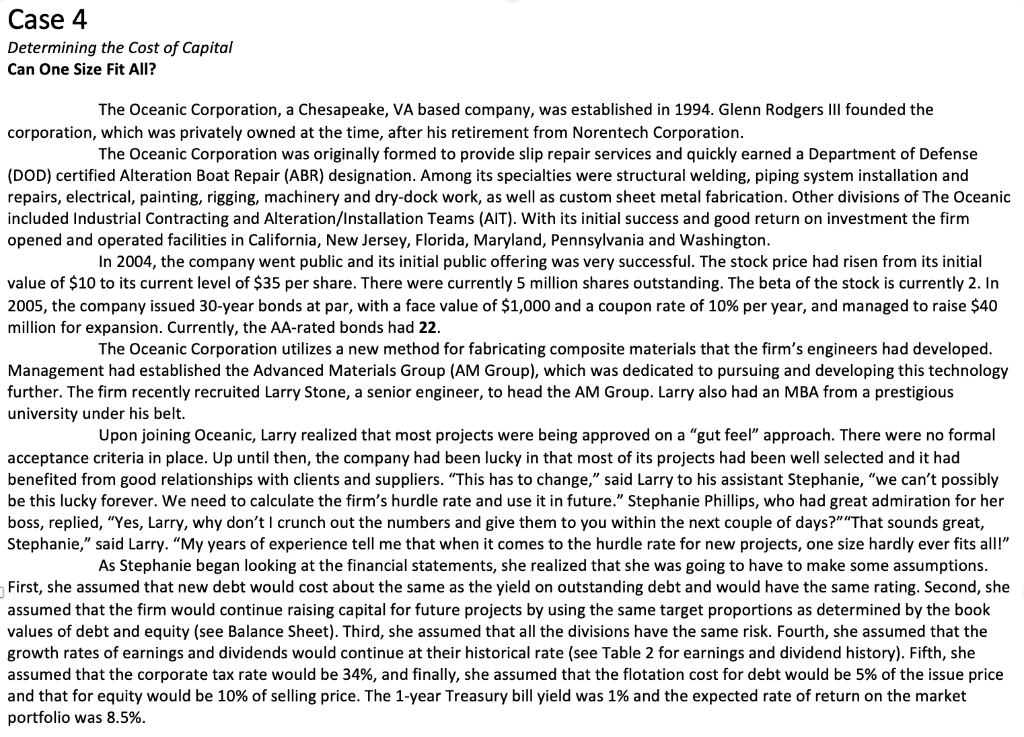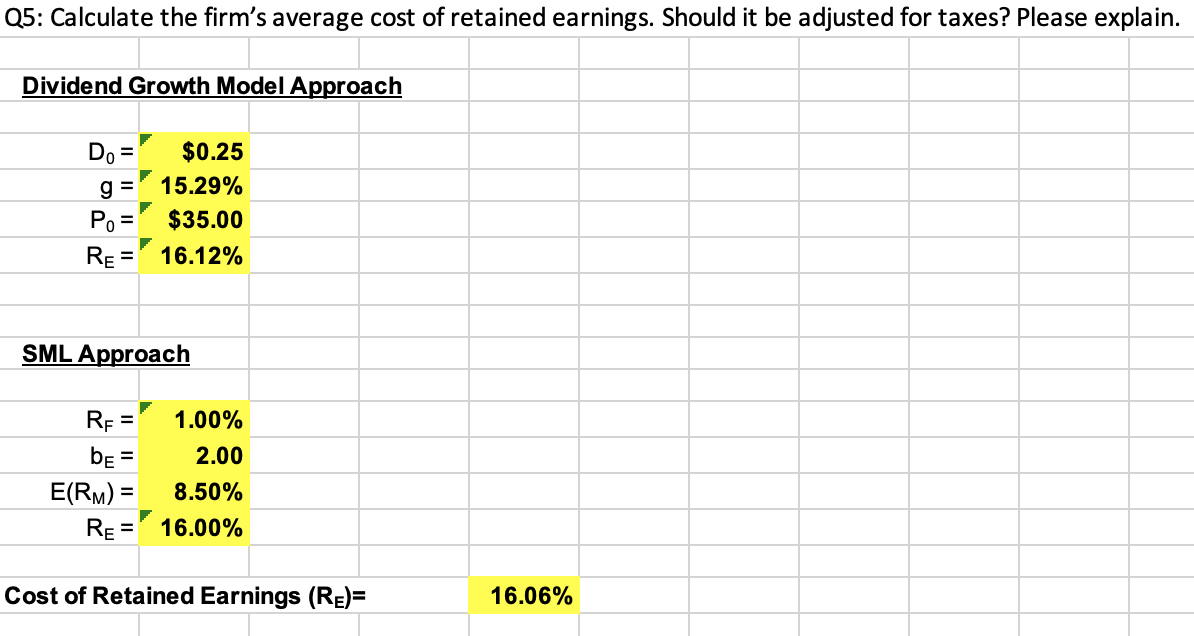Answered step by step
Verified Expert Solution
Question
1 Approved Answer
Q5: Calculate the firms average cost of retained earnings. Should it be adjusted for taxes? Please explain. Q6: Can flotation costs be ignored in the
Q5: Calculate the firms average cost of retained earnings. Should it be adjusted for taxes? Please explain.
Q6: Can flotation costs be ignored in the analysis? Explain.
Please help me answer Q5 & Q6 with explanations, thank you!



Step by Step Solution
There are 3 Steps involved in it
Step: 1

Get Instant Access to Expert-Tailored Solutions
See step-by-step solutions with expert insights and AI powered tools for academic success
Step: 2

Step: 3

Ace Your Homework with AI
Get the answers you need in no time with our AI-driven, step-by-step assistance
Get Started


